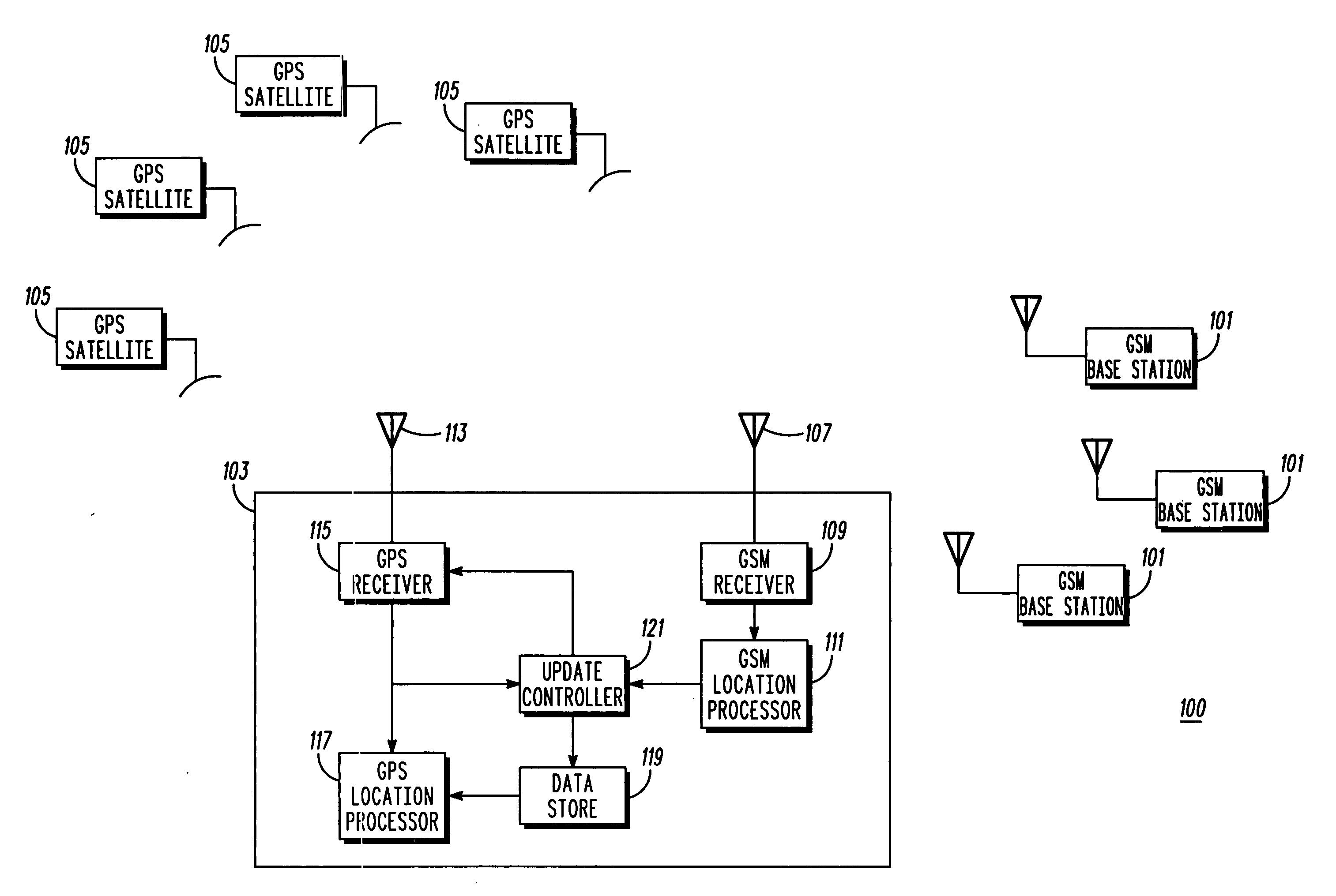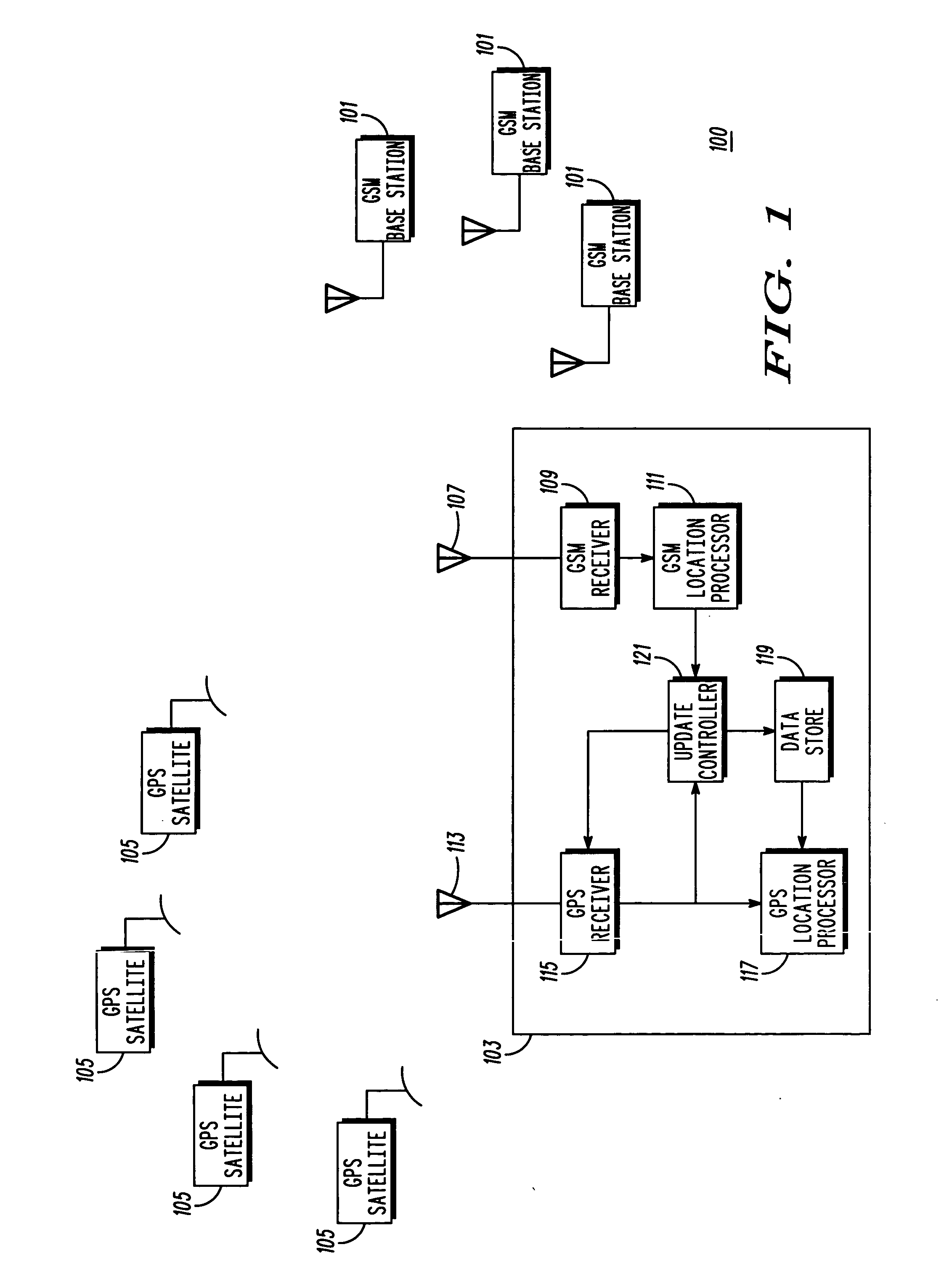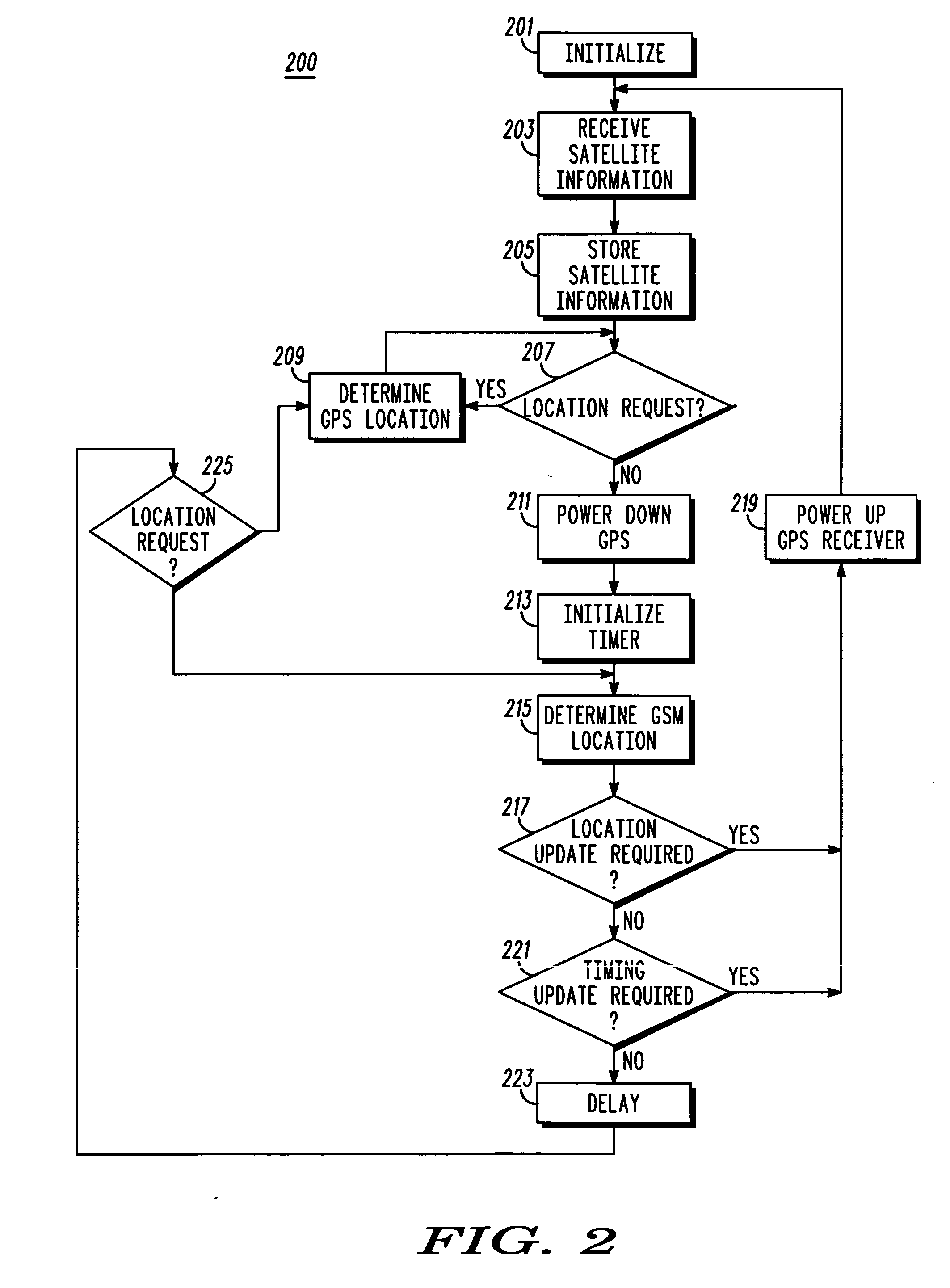Subscriber unit, a cellular communication system and a method for determining a location therefor
a subscriber unit and location technology, applied in the direction of direction finders, instruments, measurement devices, etc., can solve the problems of limited accuracy that can be achieved by a gps location determination based only on the signals transmitted from the gps satellites, complex time base implementation, and unsuitability for cheap portable units, etc., to achieve the effect of alleviating one, reducing one, and reducing the other
- Summary
- Abstract
- Description
- Claims
- Application Information
AI Technical Summary
Benefits of technology
Problems solved by technology
Method used
Image
Examples
Embodiment Construction
[0058] The following description focuses on an embodiment of the invention applicable to a GSM (Global System for Mobile communication) subscriber unit comprising a GPS (Global Positioning System) location unit. However, it will be appreciated that the invention is not limited to this application but may be applied to many other cellular communication systems and satellite location systems including the upcoming satellite location system known as Galileo.
[0059]FIG. 1 illustrates a cellular communication system 100 comprising a subscriber unit 103 in accordance with an embodiment of the invention.
[0060] The cellular communication system 100 comprises a plurality of GSM base stations 101 interconnected by a fixed network (not shown). The base stations 101 are operable to communicate over the air interface with GSM subscriber units in accordance with the GSM Technical Specifications. In addition, the base stations 101 are operable to broadcast and transmit common information, such as...
PUM
 Login to View More
Login to View More Abstract
Description
Claims
Application Information
 Login to View More
Login to View More - R&D
- Intellectual Property
- Life Sciences
- Materials
- Tech Scout
- Unparalleled Data Quality
- Higher Quality Content
- 60% Fewer Hallucinations
Browse by: Latest US Patents, China's latest patents, Technical Efficacy Thesaurus, Application Domain, Technology Topic, Popular Technical Reports.
© 2025 PatSnap. All rights reserved.Legal|Privacy policy|Modern Slavery Act Transparency Statement|Sitemap|About US| Contact US: help@patsnap.com



